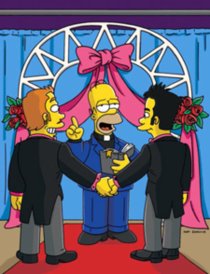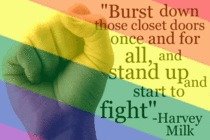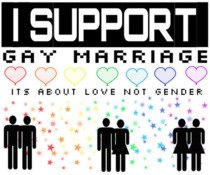 The new issue of Interview magazine has a very interesting interview with Tom Ford about his careers as a fashion icon and movie director.
The new issue of Interview magazine has a very interesting interview with Tom Ford about his careers as a fashion icon and movie director.Here is an excerpt of the interview with John Currin:
When Tom Ford walked away from womenswear more than six years ago, he wasn’t just vacating his post as creative director of Gucci Group, where he designed for both Gucci and Yves Saint Laurent—he was leaving an industry that he helped shape and reinvent. He’d brought a new understanding of glamour, beauty, sophistication, and, above all, sexual seduction to fashion, so when he announced in 2004 that he was quitting to try his hand as a film director, it sparked something of a communal identity crisis. Who would fill the void, rise to the occasion, and, more importantly, have both the creative talent and business acumen to fulfill the dreams of customers and the expectations of stockholders?
No doubt, in Ford’s absence—shorter than some imagined, as he launched his eponymous menswear label in 2007—fashion has changed significantly. But so has the man himself. In 2009 he delivered A Single Man, a poignant, wrenching, maturely expressed drama based on the Christopher Isherwood novel, which revealed him to be a cinematic force as well as a sartorial one. And then last fall, the man who famously got out of the game because he was fed up with the business came back to the land he once ruled—and did so in a sensational way.
Tom Ford’s Spring 2011 womenswear collection, presented at Ford’s Manhattan store to a select few journalists, editors, and fashion-world heavies, was the biggest show of the season that you never saw, partly because Ford decided to mark his return to dressing the female form as a way of protesting the current state of the industry: fashion as impersonal, aggressive, and aloof; fashion as playing to the critics instead of the customers; fashion as instantly accessible via the Internet to a global audience that obsesses over trends without ever experiencing the quality, the complexity, and the refinement of the clothes themselves. The presentation was Ford’s manifesto-like argument for bringing back to high-end fashion the excitement, intimacy, immediacy, and sense of fun—all qualities that have been arguably sacrificed over the last decade for the mass-takeover approach favored by many of today’s designers.
Ford invited only 100 guests to his Madison Avenue showroom on the evening of September 12, 2010. Playing emcee on the microphone, with photographer Terry Richardson and his team securing the show’s only visual documentation, Ford announced each look as it came down the runway worn by one of the many actresses, artists, models, musicians, socialites, and muses the designer had personally chosen to walk in the show—among them, Julianne Moore, Beyoncé Knowles, Daphne Guinness, Lou Doillon, Lauren Hutton, Karen Elson, Marisa Berenson, Natalia Vodianova, and Stella Tennant. While Ford refused all requests for media sneak peaks and red-carpet opportunities, what was evident in the collection was that Ford’s continuing obsession with and glorification of the female form had not gotten tame—he brought out the slips and curves of the body with silk fringe, leopard print, suede, and leather.
Ford hasn’t abandoned his second career—in fact, he is in the process of finishing the screenplay for his next film project. But as his friend, the painter John Currin (husband to another of Ford’s presentation muses, the artist Rachel Feinstein), caught up with him in Los Angeles, it was clear that Ford relished being back on his home turf, making clothes for women and making women feel the way only he can.
TOM FORD: We have to be careful. Everything we are saying is going to be recorded.
JOHN CURRIN: [laughs] The small acorn that will grow into a great oak of a scandal later, right?
FORD: [sighs] Ah, yes, I know what that’s like. You say the littlest thing, it gets misinterpreted.
CURRIN: Well, I’m here to ask you some questions, and I think a good one to start off with is about your childhood. What were some of your first memories of seeing beauty?
FORD: That would have been as a little kid living in Texas. My grandmother was probably the first person who I thought was beautiful. She was incredibly stylish, she had big hair, big cars. I was probably 3 years old, but she was like a cartoon character. She’d swoop into our lives with presents and boxes, and she always smelled great and looked great. She always had the latest things. She was larger than life to me, even as an adult, but when I was a child it was really like she was from another planet. It seemed like she lived in a different world, and wherever that was, I wanted to go.
CURRIN: So it wasn’t natural beauty, then. It wasn’t sunsets or mountains or trees.
FORD: No. In fact, I didn’t learn to appreciate those things until much later in life, because I grew up mostly in New Mexico, which is famous for sunsets and mountains and trees. That’s the reason I have a place there and spend so much time there now. When I was a little kid, all I wanted to do was to escape what I thought was the country and get to a city. Probably film and television had influenced me so much, I really thought the key to happiness was living a very artificial life in a penthouse in New York with martini glasses.
CURRIN: Your movie had some of that feeling; for instance, with its collection of small moments of cultivation—the way things are folded or put in a drawer.
FORD: Well, I do that myself, and that character was very, very, very autobiographical and very different from the character in the Isherwood book. That’s really about putting on a sort of armor to go out in the world. The character played by Julianne [Moore] was quite literally based on my grandmother. It’s funny, that movie was cathartic for me. It was really my midlife crisis on the screen. [Currin laughs] It was! I was working through all of those earlier notions of what was important in life. And George has a moment where time stands still, and he really feels his connection to the universe and understands the meaning of life, in a way, and that he doesn’t need to live any longer, and he dies. I never used to say that he dies, but I think enough people have seen the film by now, so I can give away the ending. But as an adult working in the fashion industry, I struggle with materialism. And I’m one of the least materialistic people that exist, because material possessions don’t mean much to me. They’re beautiful, I enjoy them, they can enhance your life to a certain degree, but they’re ultimately not important. Your connections with other people are important, our connection to the earth. And that’s why I go to New Mexico as often as I can. And what I find to be the most beautiful thing in the world now is nature—sunsets, trees, my horses.
CURRIN: I didn’t mean it pejoratively that your aesthetic is always about cultivation.
FORD: My fashion aesthetic. I guess I’ve yet to express another aesthetic.
CURRIN: What’s interesting in the movie is that the aesthetic is so unsexualized. It was orderly and beautiful, but with this tragic panic underneath. But it was weird how it did look like you and your world to a degree, or how most people envision it.
FORD: Well, I think most people don’t actually know me. They know the projection of me that I use to sell things. And they know me from an expression of material beauty. I’m actually very introverted. I’m very shy. I’m very emotional. I think those are human experiences that everyone can relate to. So this movie wasn’t about sex. It was about love. That was on purpose, because a lot of people equate homosexuality with sex and not necessarily with love. It was important that I keep the movie not about sex. It was about the same struggle that everyone goes through, if you’re intelligent, at some point in your life. You ask yourself, What is this all about? Why am I living? What does this mean? Why am I here? Those are the questions George is asking himself.
CURRIN: If I could segue then to—
FORD: To high heels? Yes! Let’s get to high heels. That’s a great segue right into fashion.
CURRIN: Actually, yeah, because you are saying that people associate homosexuality with sex—or oversexed men and sexual relationships. But when you’re making a sculpture or image of a woman, is there a sexual aspect to it?
FORD: It is never even calculated. When I’m making an image of a woman, or dressing a woman—I have a reputation for sex and making a woman sexy, and men as well—but I don’t start out saying, “Oh, I’m gonna make this woman look sexy or sexual.” I simply stand there and put her in front of me and say, “What can I do to make her more beautiful in my eyes? Let’s pull in the dress here, let’s do this, let’s do that.” The end result is something that other people consider sexual, but for me it’s just beautiful. My expression of beauty is something I do naturally. I love the human body—the female body, the male body. I work in a way to try to enhance the body, and so you often see a lot of the body or the silhouette or outline, and that’s what people equate with sex. But I’m very comfortable with sexuality. It’s not anything that’s ever freaked me out. I’m very comfortable with naked bodies. Someone asked me recently about male nudity, and I brought up the subject that, in our culture, we use female nudity to sell everything. We’re very comfortable objectifying women. Women go out and they are basically wearing nothing. Their feet and toes are exposed, their legs are exposed, their breasts are exposed. Everything is exposed—the neck, the arms. You have to be really physically perfect, as a woman, in our culture to be considered beautiful. But full frontal male nudity challenges us. It makes men nervous. It makes women nervous. Other times in history, male nudes have been regarded in a different way. The Olympics were originally held nude. The reporter I was explaining this to said, “This would make a great story.” I explained how when I come home I actually
take off all my clothes, and I wear no clothes until I leave. I eat naked. I do everything completely naked. He said, “That would make a great interview.” I said, “Fine, we have to do it nude.”
CURRIN: How old was the interviewer?
FORD: Oh, 55 or 56. [Currin laughs] He was in very good shape. Anyway, we did the interview. The interviewer was straight, and I made it a point to desexualize the interview even though I was sitting with my legs wide open, completely naked. At the end of the interview, I put on a dressing gown and he put on his clothes, and I sat next to him on the sofa and said, “Was that sexual?” He said, “Absolutely not.” And I said, “That’s because I didn’t make it sexual. Sexuality is in the eyes, it’s an expression, it’s in a look.” Then, all of a sudden, I looked at him in a very different way, and it made him very nervous.
 CURRIN: I wanted to ask if you’ve ever felt any remorse in your work, because that is something I’ve felt before in my work. You don’t seem like someone who feels a great deal of remorse about anything.
CURRIN: I wanted to ask if you’ve ever felt any remorse in your work, because that is something I’ve felt before in my work. You don’t seem like someone who feels a great deal of remorse about anything.FORD: No, I don’t.
CURRIN: I sometimes get the feeling that I look at women to objectify them, and I start to feel guilty. I wonder if that ever plagues you?
FORD: I think I detach the physical from the spiritual. It’s my business to make a woman or a man beautiful, and I’m working with a model in a fitting, and I’ve objectified them to the point that they become an object. They’re something that I’m modeling or shaping or sculpting, but I’m very aware that even though I make them physically beautiful, their soul and personality and character is somewhat detached from that. It’s great when you have a combination of the two— that’s what makes a true beauty. Some people are physically beautiful but yet they’re completely uninteresting, and thus they’re not beautiful. I detach the two. And I turn the same eye on myself: When I look in the mirror, I say, “Well, this eyebrow is starting to sag,” or “I’m going gray right here, I need to fix that.” Or “I’ve eaten too much. I need to do a few more push-ups, blah blah blah.” But that’s completely separate from me as a human being. It’s purely the body that I move through the world in, and people react to it on the surface. So, no, I don’t have any remorse, because I separate them. Do you?
CURRIN: Yes. I think it’s mixed up in my lust for women, or my sexual desire for women . . .
FORD: That’s why I think gay men make better designers.
CURRIN: Are gay men free? Are you unburdened by lust? Is that an advantage of being a gay man?
FORD: I lust after beautiful women. First of all, I love women. But I lust after beautiful women in the way that I lust after a beautiful piece of sculpture—this will probably get me in trouble—or a beautiful car. I believe everyone’s on a sliding scale of sexuality. There are moments where I am sexually attracted to women. But it doesn’t overpower my first impulse; my lust for them is the same as my lust for beauty in all things. It’s not like I ever think, “Oh, my god, I’ve got to spread her legs and fuck her.”
CURRIN: Isn’t that the sticking point—
FORD: What a well-chosen word. [both laugh]
CURRIN: But the very thing that is required by art, which is to isolate and objectify and to look from a distance at something, is the thing that is considered oppressive when men do it to women. And that’s what gets you into trouble.
FORD: I think that’s wrong. I’m an equal-opportunity objectifier. I think it’s the exact same thing. I’m sorry, I don’t understand why our culture both worships and objectifies beauty, and then slams those of us who participate in it. Because I make that detachment, I’m capable of objectifying a beautiful woman, but that doesn’t demean her in any way. She’s beautiful because she’s a creature who exists physically, in the physical world, who happens to be in a moment of prime.
CURRIN: That would seem to be a theme of your fashion work: the complete freedom from guilt. Part of the fantasy of the ad campaigns—which I think Americans look at as a leisurely European playboy—is the evocation of a person not really hampered by guilt or remorse or worried about the unhealthy aspects of their lifestyle.
FORD: This may sound corny, but the only thing I feel remorse about is when I hurt someone, hurt their feelings, or make them feel bad. I’m obsessive about that. “Oh, my god, did I say the wrong thing? Did I hurt them? Did they understand what I meant?” But the creation of visual images or design, I have no remorse over. I’m not somebody who regrets anything, because I’m very happy with where I am and everything I’ve done in my life. Everything that’s happened to me, I’ve learned a lesson from—or if I didn’t, I was foolish, and I will repeat the same thing and eventually, hopefully, I will learn a lesson.
CURRIN: Do you think that is an unusual trait among Americans?
FORD: I think we’re very uptight in America. You have to remember that we’re descended from Puritans. Whether or not the country is now composed of immigrants, our culture as American really begins with the landing of the Pilgrims and a puritanical view of things. It was a group of people who escaped Europe because they felt it was depraved in a certain way, and that culture still permeates. I’ve lived in Europe for the last 20 years, so I’m kind of a hybrid. I feel very American in certain ways, and in lots of ways I feel more European.
CURRIN: How do Europeans feel about you? Do they see you as a stereotypical American who’s hardworking and controlling, or do they see you as one of them?
FORD: I think the Italians feel like I’m one of them. I think that’s because I resurrected a brand that was very close to their hearts, and I lived in Italy for a long time and speak Italian. The English, who knows? As for the French, the first thing out of every French reviewer’s mouth was something about being an American. The French are very nationalistic, which I think is very backward, honestly. I think today you have to be international and global. It’s very narrow to think in a nationalistic way. Unfortunately, Americans do the same thing, because most Americans don’t even have a passport. They don’t travel.
CURRIN: I’m so envious of Europeans for their history, their painting ability, their style and aesthetic, and I sometimes think “American painter” is an oxymoron. I wonder if it’s the same way for a designer.
FORD: Just remember that you’re descended from Europeans. You’ve just grown up in this country. You can still call yourself a European who’s living in America.
CURRIN: Northern Irish. That’s not quite European . . .
FORD: Not continental . . .
CURRIN: It’s not Monte Carlo.
FORD: That’s not one of my favorite places in Europe.
CURRIN: [laughs] I’ve never seen it. I’ve never been there. What I know of Monte Carlo is probably mostly informed by your advertisements.
FORD: That’s not what Monte Carlo is. It’s really a lot of people who are overly tanned and have too much collagen and too much money and diamonds that are too big.
CURRIN: It’s like Los Angeles.
FORD: On steroids.
John Currin is a New York–based artist. His recent exhibit, “New Paintings,” was shown at New York’s Gagosian Gallery.
To read the full Tom Ford interview pick up a copy of the February issue of Interview.












No comments:
Post a Comment